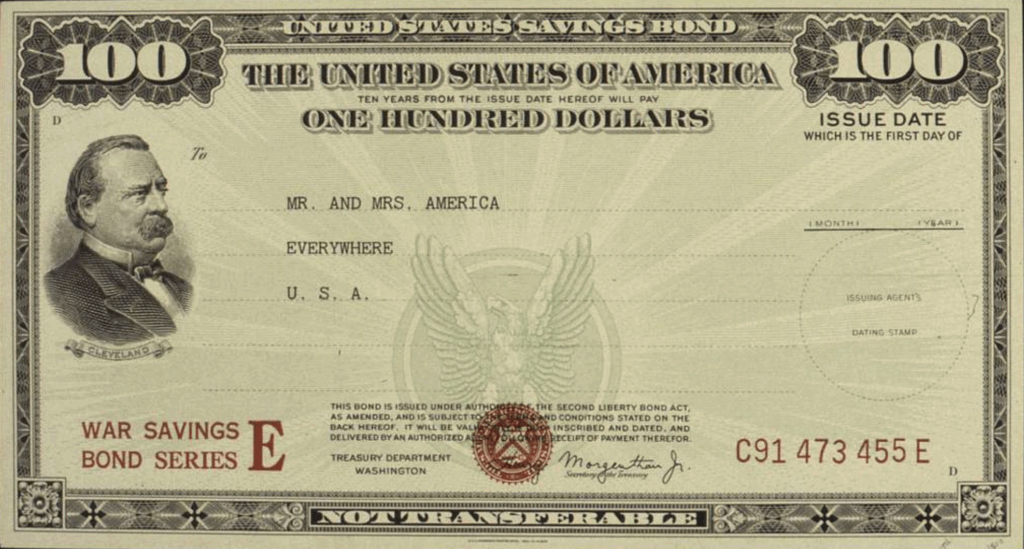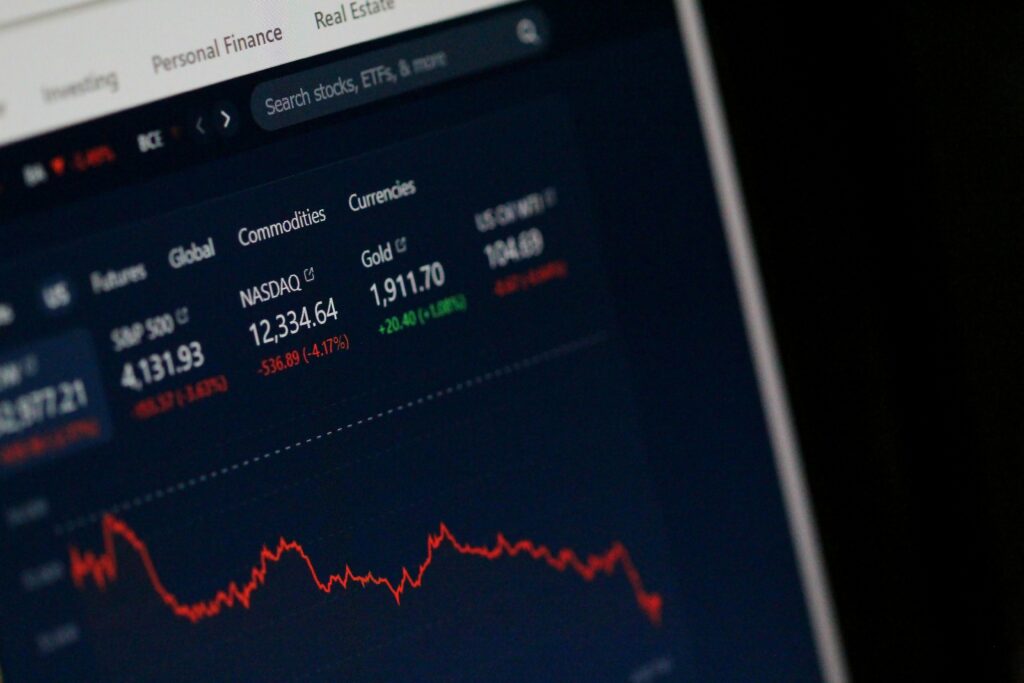Ever had that mini panic when your favorite streaming service announces a price hike right as your savings account goes into stealth mode? Same. When the economy does the cha-cha between boom and bust, we all start hunting for financial life jackets. Whether you’re glued to TikTok for market memes or IRL stressing over bills, these 15 recession-proof investments will help you dodge the worst of the downturn and maybe even surf the wave a little.
1. Gold Bullion

If you want to feel like a pirate without the sea sickness, gold’s your treasure. History proves that when markets tank and panic spreads, investors rush to gold for its stability. Gold’s reputation as a safe-haven asset is well documented by Investopedia. Unlike stocks, which can crater on a single earnings miss, gold laughs off conference calls and fiscal cliffs. It has almost zero correlation with equities during downturns, meaning it can cushion your portfolio when stocks dive. Juvenile? Maybe. Effective? Definitely. When inflation spikes or currencies wobble, gold often outperforms, preserving purchasing power in a way cash can’t.
You can buy physical bars or coins if you love the idea of owning something you could bury in a backyard. If you’d rather not awkwardly hide a gold brick under your mattress, there are gold ETFs like GLD that track prices. Yes, you’ll pay storage or fund fees, but that’s a small toll for uncanny resilience. Central banks hoard the stuff like it’s chocolate in a kids’ movie—proof that the pros take it seriously. During recessions, gold often buckles less, or even gains, as other assets falter. It’s not going to rock your portfolio to the moon, but it will help you sleep better at night. And let’s be real: bragging about your shiny bars at a Zoom happy hour is priceless.
2. Treasury Bonds

When your crypto is crying and your stocks are sporting skid marks, lend cash to Uncle Sam instead. U.S. Treasury bonds are the poster child for “risk-free,” backed by the full faith and credit of the government. According to Forbes, Treasuries are known as some of the world’s lowest-risk investments. They pay fixed interest and mature on specified dates, so you basically get a guaranteed mini paycheck. Prices often rise during recessions because rates fall, rewarding bondholders with capital gains on top of interest. It’s the financial world’s equivalent of wearing your least offensive hoodie to a family reunion. And unlike a jealous ex, the U.S. government almost always pays you back.
Long-term bonds (e.g., 10- or 30-year) can be especially groovy when yields decline, boosting their prices. If tying up cash for decades sounds scary, you can build a bond ladder of varied maturities to keep funds flowing. Treasury Inflation-Protected Securities (TIPS) add an inflation-adjustment twist—great if CPI is your new soulmate. You can buy Treasuries directly via TreasuryDirect or through brokerage accounts in minutes. No need to memorize ticker symbols or decode financial mumbo jumbo. Best of all, these bonds won’t slide off a rollercoaster when markets crash. So kick back, pour yourself a sensible decaf, and let Uncle Sam do the heavy lifting.
3. Utility Stocks

When your electricity still works but your portfolio is in a comatose state, utility stocks are the star players. These companies deliver essential services—power, water, gas—that people pay for come hell or high water. Demand barely budges during recessions, making utilities defensive gems in shaky markets. As Investopedia explains, utilities often outperform when economic growth stalls. They score stable cash flows and dividends, offering cushioned landings when stocks nosedive. Think of them as the dependable friend who shows up with pizza, not the hype-fueled party animal. They also benefit from regulated monopolies, so competition isn’t breathing down their necks.
You can snag individual names like NextEra Energy or Southern Company for targeted exposure. Or go with a utility-focused ETF like XLU to spread your bet across multiple players. While they won’t skyrocket like biotech rockets or meme favorites, they also rarely flatline. Their beta is low, so during market stress you’re less likely to see heart-stopping plunges. Everyone needs lights and water—even during dinner-and-rent-cutting negotiations—so these stocks have built-in clients. Dividends often yield north of 3%, giving you regular cash to binge on avocado toast or whatever keeps you sane. Utility stocks may not be sexy, but in a recession, they’re basically the utilities you can’t live without.
4. Consumer Staples Stocks

When budgets tighten, people still buy toothpaste, toilet paper, and their daily latte fix. That’s why consumer staples stocks—think, Coca-Cola, and Walmart—are recession survivalists. These companies sell stuff we literally can’t quit, no matter how grim things get. They boast inelastic demand, so even if your indie coffee habit dims, you’ll still grab that generic brand when you need it most. As detailed by Nerd Wallet, staples firms are classic defensive stocks during downturns. Their strong brands and pricing power mean they can nudge prices without scaring off shoppers. They also tend to have rock-solid balance sheets, so debt dramas rarely derail their operations.
You can pick individual leaders like Colgate or PepsiCo if you’re feeling selective. Or snag a Consumer Staples ETF like XLP for hands-off diversification across the sector. Dividends here are reliable—think of them as rainy-day latte coupons that land in your account. Yes, these aren’t your portfolio’s wild stallions, but during a sell-off, they’re the trusty steeds that still plod forward. Even if investors flee fancy tech or cyclical names, staples stocks usually sip from an oasis of steady earnings. They’re the slow-cooker comfort food of equities—steady, filling, and just what you need when the market buffet closes early. So next time panic strikes, remember: someone out there still has to mop your floors and brew your coffee.
5. “Permanent Portfolio” Mix

Harry Browne’s “Permanent Portfolio” is like the Swiss Army knife of investing—built for every situation. It calls for equal slices—25% stocks, 25% long-term Treasuries, 25% cash (T-bills), and 25% gold bullion. No crystal ball needed; it aims to shine whether the economy booms, busts, inflates, or deflates. According to the US News & World Report, this blend is designed to weather any storm. During recessions, bonds and cash cushions soften the stock market blow. Gold picks up the slack if inflation rears its ugly head. And in deflation scenarios, long-term Treasuries tend to surge as rates fall.
Rebalancing annually is basically your portfolio’s spa day—trimming what grew too big and topping up what lagged. It’s low complexity, meaning you spend more time sipping kombucha than freaking out over daily price charts. Stocks cover your prosperity ticket, while cash and bonds handle the “tight money” and recession rounds. Gold is the inflation bouncer, stepping in if prices get unruly. This strategy sidesteps guesswork and timing the market—a blessing for the chronically risk-averse. It’s not about explosive gains but consistent protection, a moat rather than a runway. For those tired of emotional trading swings, the Permanent Portfolio offers a pretty chill ride through financial chaos.
6. Treasury Inflation-Protected Securities (TIPS)

If inflation gives you nightmares, TIPS are your built-in worry doll. These government bonds adjust their principal based on the Consumer Price Index, so your investment value balloons with rising prices. You still collect interest, but your “face” value flexes upward in sync with inflation numbers. It’s like having a portfolio thermostat that cranks up as costs of living do. TIPS yields tend to trail nominal Treasuries, but that’s the toll you pay for inflation insurance. At maturity, you get whichever is higher: the adjusted principal or the original face amount. That means if deflation strikes, you still get at least your initial investment back.
You can buy TIPS via TreasuryDirect auctions or snag them through brokerage platforms in fund or ETF wrappers. Funds like SCHP or TIP simplify the process and provide instant diversification across maturities. They’re especially handy in tax-advantaged accounts, since the inflation adjustment is taxable each year. If you’re saving for long-term goals and worry about eroding purchasing power, TIPS make a compelling case. Just remember that in a flat or deflationary environment, their real returns might underwhelm. Still, for anyone spooked by runaway prices, TIPS are a logical defensive play.
7. Skills and Education

No cap, the best investment in a recession might actually be you. When layoffs loom and industries get flipped like pancakes, upskilling or reskilling can keep your income streams alive—or even unlock new ones. Whether it’s mastering a software tool, earning a certification, or learning how to sell like a pro, investing in your own human capital pays dividends in any market. And unlike the stock market, no one can take your skills away from you. That shiny new certification? Still yours even if the economy does the Macarena off a cliff.
Online platforms like Coursera, Udemy, and LinkedIn Learning make it crazy easy to level up from your couch. Want to pivot from marketing to data analytics? There’s a class for that. Thinking about freelancing on the side? Learning design, writing, or coding can turn weekend curiosity into bankable skills. Education often gives you leverage when negotiating raises, job-hopping, or launching your own gig. The ROI is legit—even if you don’t see it overnight, the career durability you gain can keep you recession-resistant long after the storm passes. So yeah, buy that course. Watch that tutorial. Get that cert. Future-you will be giving you a grateful high-five (and probably a LinkedIn update).
8. Dividend-Paying Blue-Chips

When markets get messy, dividend-paying blue-chips feel like mini paychecks in the storm. Companies such as Johnson & Johnson, Microsoft, and McDonald’s have long histories of reliable dividends and strong cash flow. Their stocks may wobble during downturns, but the income cushion often keeps total returns less battered. These firms typically sport durable business models, allowing them to maintain payouts even in lean quarters. Many belong to the “Dividend Aristocrats” club—firms that have hiked dividends for 25+ years straight. That track record speaks volumes about balance-sheet strength and management discipline. In a recession, consistent dividends can help offset paper losses elsewhere.
You can cherry-pick individual aristocrats or grab a Dividend Aristocrats ETF for built-in diversification. Setting up a dividend reinvestment plan (DRIP) turbocharges compounding, buying more shares with each payout. Over time, this snowball effect can become a substantial income stream. These stocks often have lower betas, so they don’t swing as wildly as growth names. They won’t set the market on fire, but they’ll likely keep your portfolio from burning down. For investors craving calm, reliable income, blue-chip dividends are a classic playbook.
9. Utilities Mutual Funds

Rather than wrestling individual utility tickers, you can park capital in a utilities mutual fund. Funds like Vanguard Utilities Index Fund (VUIAX) bundle dozens of regulated power, water, and gas companies. They offer steady income and generally lower volatility than the broader market. Expense ratios are modest, especially at big shops like Vanguard or Fidelity. These funds rebalance holdings automatically, smoothing sector-specific shocks for you. Dividends are paid quarterly, providing a cadence of cash flow when you need it. Since utilities are inherently defensive, fund share prices often hold up better during downturns.
Automatic investing plans turbocharge this strategy—set and forget a monthly contribution to dollar-cost average your way into the sector. It’s ideal for hands-off investors who want a recession buffer without monitoring each utility’s earnings call. These funds also allow you to customize tax treatment by holding them in IRAs or 401(k)s. Overall, utilities mutual funds bring stability, income, and ease of use—three pillars of a defensive portfolio.
10. Healthcare Sector Funds

Healthcare is one of the few industries that actually sees demand rise when times get tough—people still need care and prescriptions. Healthcare sector funds, like the Health Care Select Sector SPDR (XLV) or Vanguard Health Care ETF (VHT), offer broad exposure to hospitals, insurers, pharmaceutical firms, and medical device makers. These companies boast inelastic demand and robust cash flows, even in recessions. Demographic tailwinds—think aging populations—add a growth kicker. Many healthcare stocks pay dividends too, providing income alongside potential capital safety.
You can access these funds in taxable or tax-advantaged accounts, making them flexible for any investor. Their expense ratios are competitive, and sector tilts rebalance automatically to reflect market weights. Pipelines of new drugs or medical innovations can spark upside surprises, while defensive earnings buffer downturns. Whether you’re young or nearing retirement, healthcare funds offer a blend of stability and growth that’s tough to beat in choppy markets.
11. Real Estate Investment Trusts (REITs)

Certain REITs—especially those owning storage facilities, senior housing, data centers, or medical offices—hold up well in recessions because demand stays stable. These companies collect rents from tenants who often have no choice but to pay for storage or care. REITs pay out most of their taxable income as dividends, so yields often hover in the 3–6% range. You gain real-estate exposure without the headaches of property management. Plus, many REITs trade on major exchanges, giving you liquidity that physical real estate lacks.
Focus on defensive sub-sectors: self-storage, healthcare, and specialized industrial like data centers. Avoid cyclical types like hotels or retail malls, which can crater when consumers tighten belts. You can buy individual REITs or opt for broad funds like VNQ, which covers a range of property types. Just remember dividends may be taxed at ordinary rates, so consider holding REITs in tax-advantaged accounts. With the right picks, REITs can supply both income and inflation hedging when stocks sag.
12. Money Market Funds

Cash may feel boring, but money market funds are the financial equivalent of a trusty sidekick. They park your capital in short-term Treasury bills, commercial paper, and other high-quality instruments. You usually earn yields that track Fed rates, so when rates rise, so do your returns—without stock-market rollercoasters. Principal preservation is the name of the game, making these funds ideal for emergency funds or dry powder between investments. Many funds now yield north of 3%, a tasty treat compared to the near-zero era we just left.
Liquidity is king here: most money market funds allow same-day redemptions, and some even offer check-writing privileges. There’s essentially no market volatility, so your balance won’t swing with economic headlines. Expense ratios are minuscule, often under 0.2%, meaning most of your yield ends up in your pocket. Whether you’re pausing on the sidelines or parking cash for short-term goals, money market funds deliver safety and flexibility.
13. Emergency Cash Fund

Before chasing yield, build a 3–6-month emergency cash fund for living expenses. This buffer covers job loss, medical bills, car repairs, or that surprise root canal—without forcing you to sell investments at rock-bottom prices. Having cash on hand prevents panic moves like liquidating stocks in a savage market dip. It’s your first line of defense, the ultimate recession-proof asset because it’s literally cash.
Park this stash in a high-yield savings account or short-term certificate of deposit (CD) for slightly better returns than a checking account. Automate monthly transfers so funding your cushion is painless. Keep it liquid: avoid tying up all your emergency money in multi-year CDs. Apps and online banks make it easy to track and access these funds on demand. Peace of mind? Priceless. Returns? Modest, but that’s the trade-off for instant access.
14. Dollar-Cost Averaging (DCA)

DCA is the strategy of investing a fixed dollar amount at regular intervals, rain or shine, boom or bust. By consistently buying shares—more when prices are low, fewer when they’re high—you smooth out the tyranny of timing the market. It takes emotion out of investing, preventing those “buy high, sell low” mistakes fueled by FOMO or panic. Over the long run, DCA can enhance returns and reduce stress, especially when volatility spikes.
You can set up automatic investments in employer plans, brokerage accounts, or even crypto platforms. Whether it’s $50 a week or $500 a month, the math works regardless of amount. DCA builds discipline, turning investing into a habit rather than an obsession. It’s not a get-rich-quick scheme, but it’s a proven way to accumulate wealth steadily. In uncertain times, consistent investing beats frantic market timing every time.
15. Foreign “Safe-Haven” Currencies

The Swiss franc and Japanese yen often flex their muscles when global markets wobble, thanks to reputations for stability and solid monetary policy. These currencies tend to gain value during risk-off episodes, offering diversification beyond domestic assets. Holding a small allocation in CHF or JPY can temper equity sell-offs and currency swings. Their low correlation with stocks and bonds makes them useful hedges when U.S. markets hiccup.
You don’t need a Swiss bank account—invest via currency ETFs like FXF (franc) or FXY (yen), or a multi-currency fund. Keep allocations modest (5–10%) to avoid major portfolio distortions. Be mindful of carry-trade risks—high-yield currencies can suffer when global rates shift. Transaction fees and spreads eat into returns, so shop around for low-cost platforms. Still, a dash of safe-haven currency can add an extra layer of defense to your recession-proof lineup.
This article is for informational purposes only and should not be construed as financial advice. Consult a financial professional before making investment or other financial decisions. The author and publisher make no warranties of any kind.








